Happy Employees And 5 More Benefits Of The Flexible Workplace
-2.jpg)


 Cut onboarding time
by 60%—here's the
Ultimate Checklist
that helped do it.
Cut onboarding time
by 60%—here's the
Ultimate Checklist
that helped do it.

In recent years, the way we work has transformed dramatically. The boundaries between personal and professional life continue to blur, making employee happiness and well-being central to every organization’s success. Burnout, disengagement, and the pressure to stay constantly connected have forced both leaders and employees to rethink what truly defines a healthy workplace.
Amid this shift, hybrid work has emerged as a sustainable model—one that supports autonomy, collaboration, and balance. Employees today are prioritizing flexibility like never before, with many seeking more flexible work arrangements that allow them to blend the best of remote and in-office experiences.
Data continues to support this trend. According to Microsoft’s latest Work Trend Index, 73% of employees want the option to work remotely at least part of the time. It’s clear that the hybrid model isn’t just a passing trend—it’s becoming the new standard for the modern workplace.
Ultimately, happy employees are productive employees. As businesses redefine their operations for this era of flexibility, the responsibility for creating a better employee experience lies firmly with employers. Here are some practical ways to enhance employee happiness and performance in today’s hybrid work environment.
Let Them Set Up Their Own Rules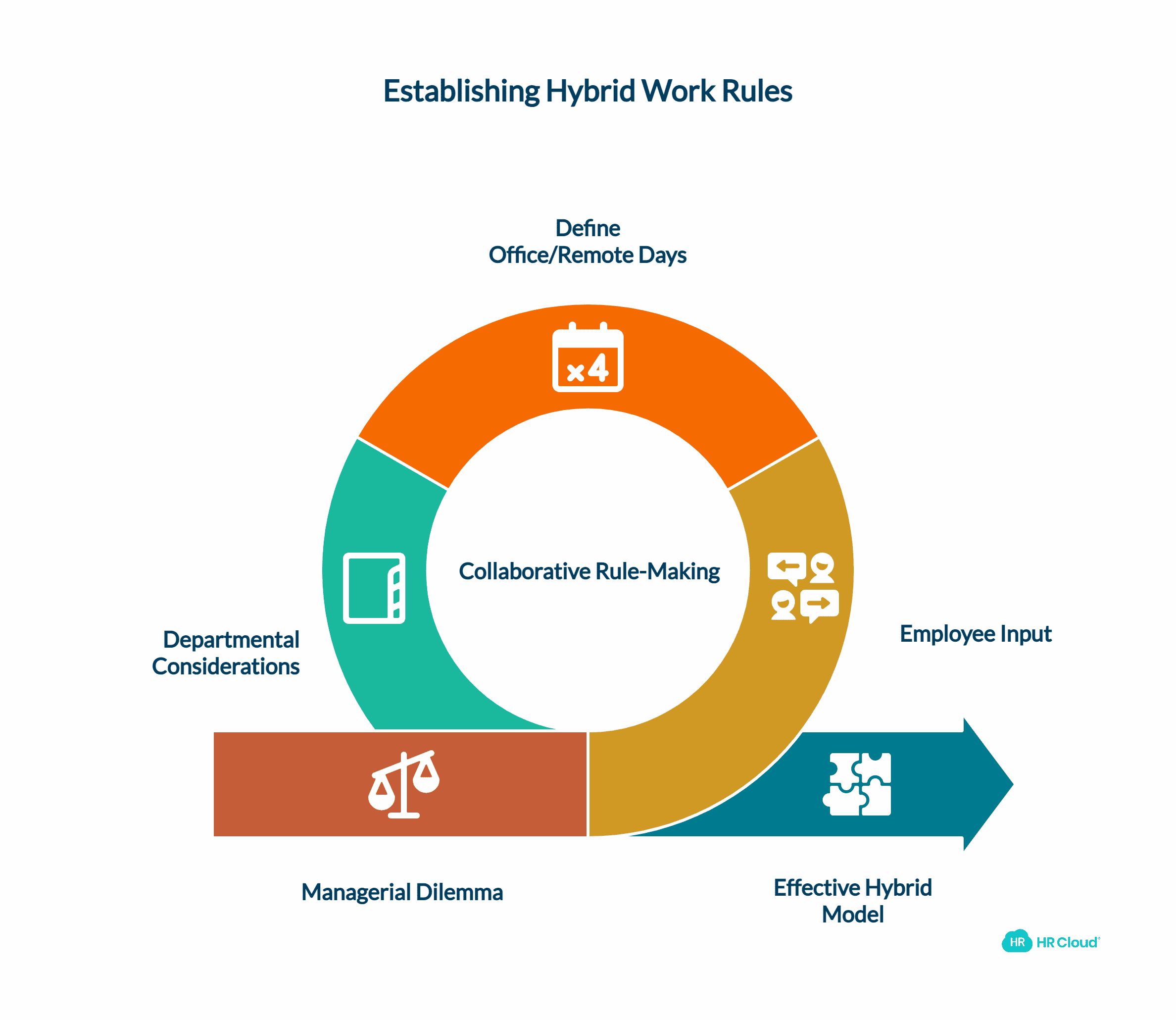
The hybrid work model obviously works; there's no denying it. Granted, in the light of returning to the "old normal", managers will be torn between rent prices for office space and their team's wish for a more flexible working model. The road they should take is to establish some ground rules for hybrid work arrangements.
Establishing feasible rules will only work if everyone gets to pitch in. Listen to your employees and figure out a solution that works best for all sides - employee empowerment begins by listening to what employees have to say about their preferred hybrid work setting.
The start can be fairly simple: establishing an office and remote days. These can be predefined days of the week, or you can set up the number of days your team is required to show up for work. A number of employers had work-from-home schemes set up prior to the pandemic, so it makes sense to beef up on those - especially if employees stand to benefit from that. Another way would be the company offering workations as part of their hybrid work policy.
While you're establishing ground rules on your hybrid work schedules, try to hear out various departments - especially if you're running a middle or large operation. Chances are that work from home is not the same for developers, accounting, and HR; different departments have different clearance protocols, and handling sensitive data on a home network might prove to be an issue. See which challenges lie in front of different departments, and how you can resolve them together to create effective hybrid workplace models.
Let Them Manage Their Own Time
There are challenges on managers' plates as well. As immediate work locations changed overnight for a large number of employees, managers were left struggling to both maintain and assess work effectiveness and work hours. Luckily, new tech came running to the rescue, and the boat was kept afloat in the hybrid work setting.
A number of tools, most of them in use even before the pandemic, quickly became staples of the modern hybrid workplace. As communication and management became easier, effectiveness and time tracking also became easier to handle and less of a challenge.
This has proven to be a twofold benefit:
-
It saves precious management time otherwise spent literally policing your team
-
By making work insights easily available, you're not breathing down your team's neck, which can often deteriorate team engagement and happiness.
Modern times require modern rules and an approach that moves along with the very dynamic times we live in. Empowerment is the buzzword in managerial circles, and it begins with a simple concept - trust. The modern manager must not only exude respect but must showcase huge trust in their team, being responsible for their actions in a hybrid work arrangement.
The operational solution can also be as simple as the concept: one way to do it is to try employee scheduling tools and empower the teams to track and design their own work schedule. It makes perfect sense that this is counterintuitive to some, but you're actually showing trust by giving your team the responsibility for the time they clock in. Not only that, you're putting them in the spotlight in front of their peers, and peer pressure can do wonders for increased productivity and workplace engagement in an adult, professional setting.
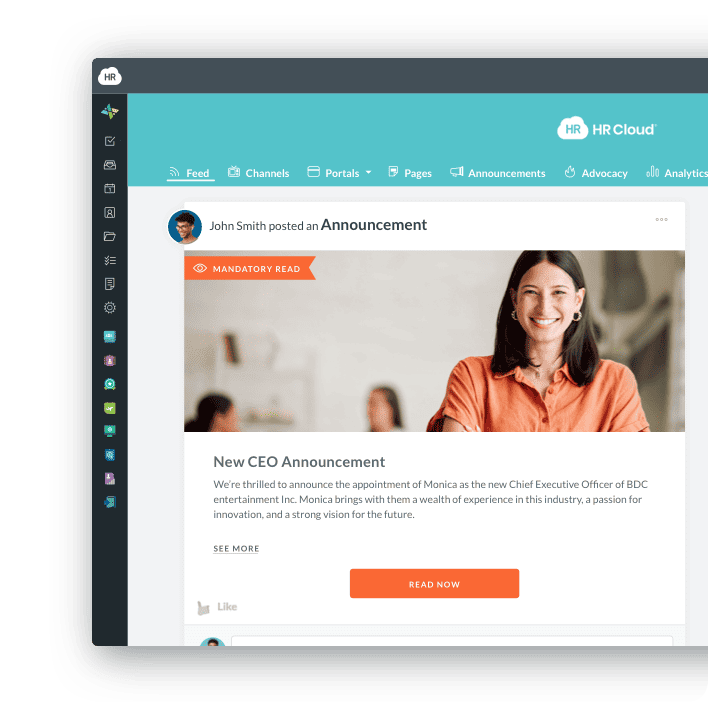
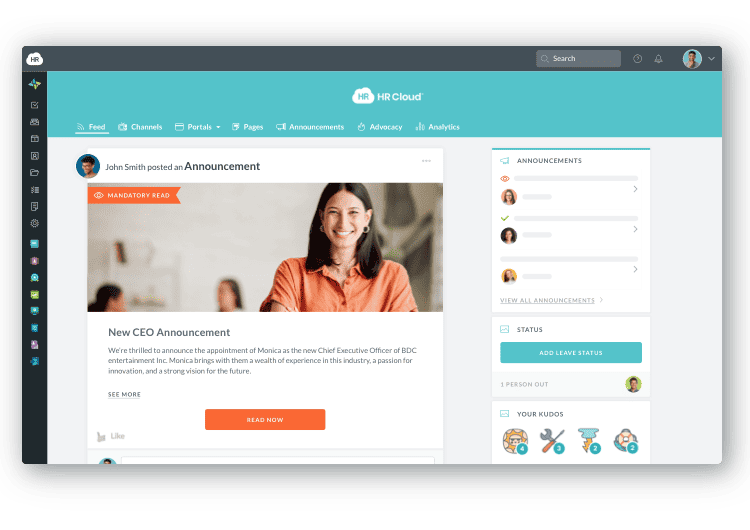
Provide a New Office Experience
The whole story about employee empowerment doesn't have to stop with time, either. A pre-pandemic study showed open-plan offices were actually making teams less productive and collaborative. It's strange how being physically close can actually make us less productive, but it makes sense on a number of levels.
This is another cue for the modern manager to take. With the freedom to work from their homes - or any other location of their own choice - team members might be reluctant to come back to wide-open offices. The reasons can be productivity, concentration, privacy, even small and quirky workplace habits, or better work-life balance. And as shown during the pandemic, the office doesn't have to be obligatory for the full time in a hybrid work model.
You can work with your HR team to determine employee preferences for the coming time, and to see how your office design can improve both work metrics and employee attendance (if you're after improving that in the first place). Designing novel workstations might be the way to go in hybrid workplaces.
The modern office can mostly do away with cubicles and personalized spaces for every employee, focusing instead on providing a place to work for workers when they do come to the office. The equipment and station design will vary greatly from one department to another, but in the era of powerful laptops (tablets even), this should not be an issue. Remember, the focus is on setting up a working environment that enables people to come to the office when their presence is needed, and not go overboard with unnecessary gadgets.
Meetings Flexibility is a Must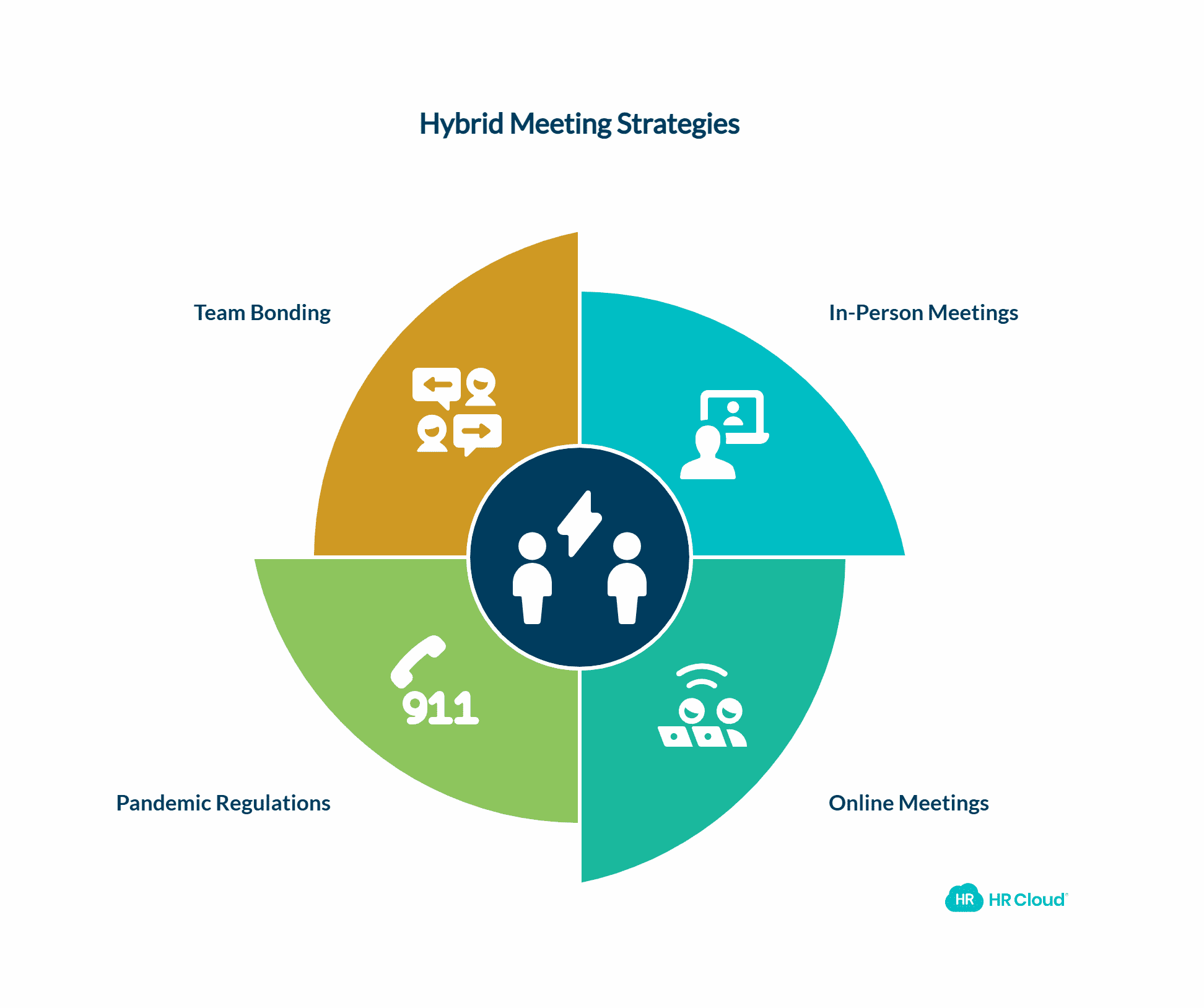
Whichever way your company - or your team - decides to go, meetings are inevitable. It's also inevitable for them to be held in person in some instances, so this is another consideration when planning ahead for your hybrid work strategy.
Be careful when setting up requirements; not all meetings require physical presence. A hybrid model, with meetings held online, is very doable these days - comms applications such as Slack, Zoom, Google Meet, or even the old and faithful Skype, all allow you to take part, voice opinions, and see your team members in real-time.
When the time comes for actual meetings or a situation requires you and your team to sit together and come up with solutions, make sure you can respect all the pandemic regulations. Also, if you'll require your team to come to the office, try to come up with less formal parts on the agenda, and make a small event out of having all your people together in one place! An actual meeting is not only an opportunity for the employees to work together, but to be together after a long period of time!
Impress the Newcomers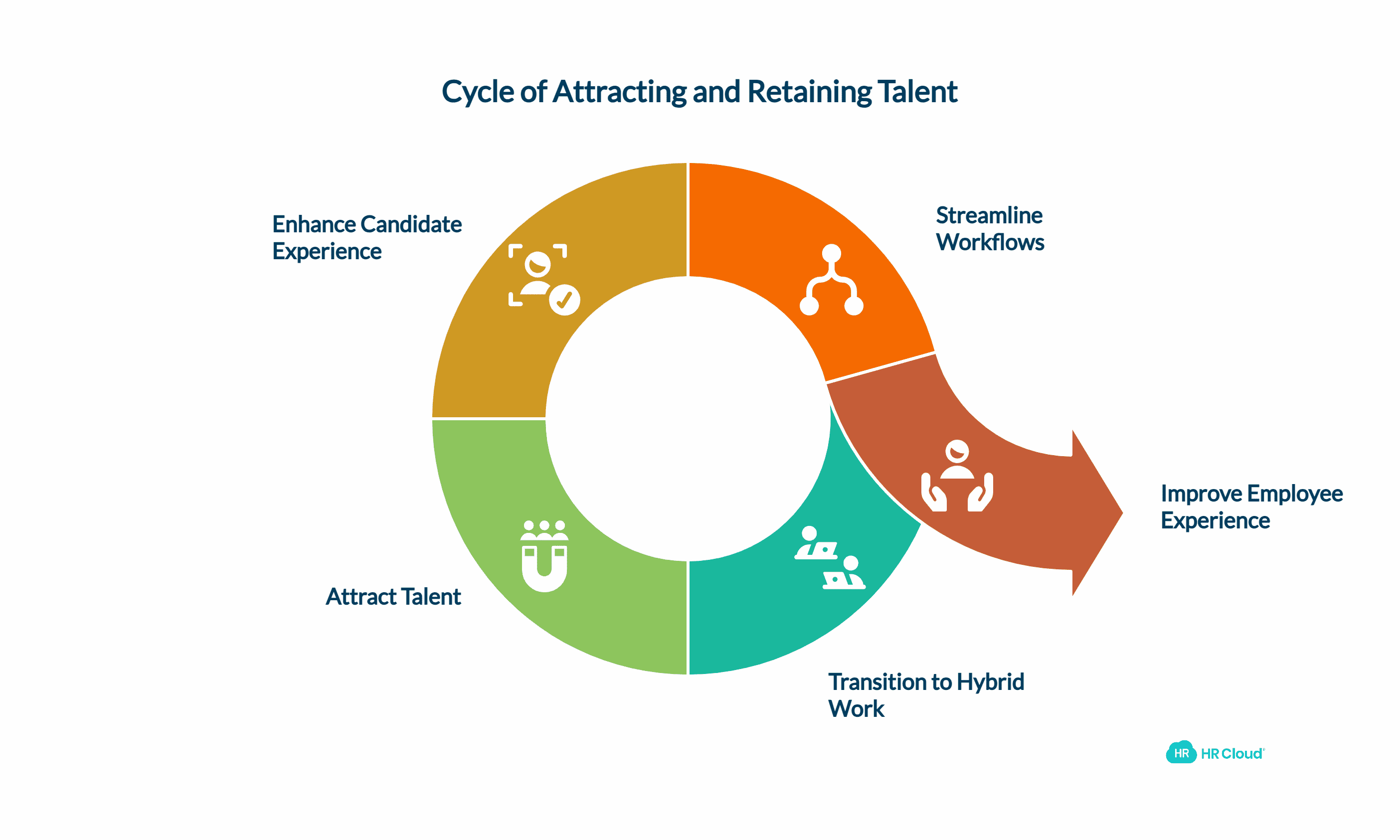
Finally, growth will require you to expand your team at some point. As the trend of workplace flexibility is going into full swing, workers will naturally gravitate towards businesses that have already transitioned successfully to hybrid work models. Taking into account all of the above, and making an action plan around those, will not only streamline your current workflows but also act as a magnet for future hires!
Remember that, when we're talking about employer branding, we're not talking only about employee experience (and retention). CX - Candidate Experience - is another big thing these days, and a happy work experience begins right at the get-go. This is something to keep in mind when designing your hiring protocols and employee onboarding - there is no reason not to do it virtually in a hybrid work environment.
Parting Thoughts
As organizations continue to evolve, one thing is clear—the future of work is flexible. The modern workplace is no longer just about where employees work, but how they feel, connect, and perform. Companies that invest in creating environments where employees are happy, supported, and empowered will see measurable gains in both productivity and engagement.
The perks of a hybrid workplace go far beyond convenience. They serve as powerful drivers of motivation, collaboration, and innovation. By leading your team confidently into this new era of work, you’re not just adapting—you’re building a stronger foundation for long-term retention and organizational success.
Author Bio: Derek spearheads key initiatives at Deputy, a global workforce management platform for employee scheduling, timesheets, and communication. With a focus on the workforce, Derek helps business owners and workforce leaders simplify employment law compliance, keep labor costs in line, and build award-winning workplaces. Derek has over 16 years’ experience in delivering data-driven sales and marketing strategies to SaaS companies like MarketSource and Griswold Home Care.
Keep Reading
45 Boss Day Messages That Actually Mean Something (2026 Guide)
When is Boss Day 2026? Mark your calendar for October 16, 2026 — the annual opportunity
Birthday Wishes for Coworkers: 50+ Messages That Build Workplace Connection
A coworker's birthday isn't just another calendar date—it's a meaningful opportunity to
Embracing Diversity: Recognizing Different Cultures in the Workplace
Workplaces today reflect the incredible diversity of the world around us. People bring
Like What You Hear?
We'd love to chat with you more about how HR Cloud® can support your business's HR needs. Book Your Free Demo

Build a Culture of Recognition. Boost Engagement. Guaranteed.
Workmates empowers employees to stay informed, connected, and appreciated—whether they’re on the front line, in the office, or remote. Recognition drives 12x higher engagement.Trusted by industry leaders in every sector




Cut Onboarding Costs by 60%.
Take the confusion and follow-ups out of onboarding with automated workflows, digital forms, and structured portals—so new hires ramp faster 3X quicker.Trusted by industry leaders in every sector




